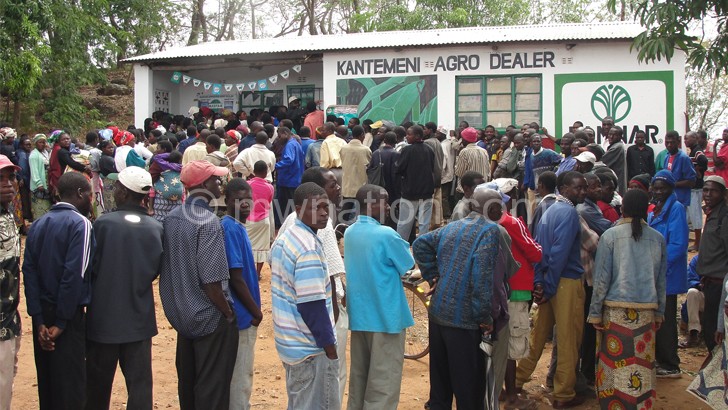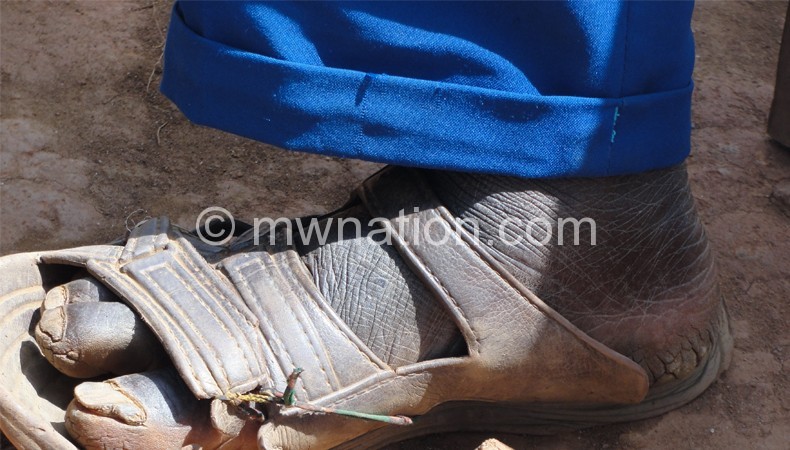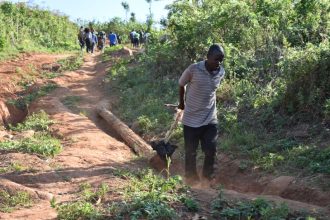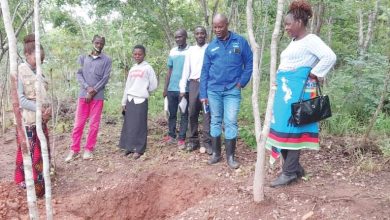Still, not yet middle-income economy
By today, at least, Malawi should have been economically self-reliant on its journey to achieve the middle-income status by 2020. It still is not, writes EPHRAIM NYONDO as he continues the Vision 2020 series
When the Vision 2020 was being developed—that is between 1998 and 2000—Malawi was among the 10 poorest nations in the world.

among its strategies
Being among the top 10 poorest nations means disaster.
It means—as well captured by the team that developed the Vision 2020 about the Malawi of that time—high incidence of poverty, high levels of stunting, low life expectancy, high levels of child and maternal mortality and high malnutrition levels.
Not only that.
It means high levels of unemployment and underemployment due to limited work opportunities, largely because of low industrialisation. It means low human capital due to low levels of education and skills development.
It means weak export base characterised by highly concentrated exports, mainly unprocessed agricultural commodities, principally tobacco. It means dominance of low-productivity smallholder agriculture based on traditional technologies.
And it means high incidence of HIV and Aids, environmental degradation and gender bias.
Today, Malawi—like it was when the Vision 2020 was being conceptualised—remains stuck in the depth of world’s top 10 poorest nations. In fact, it is still heavily donor-reliant—a complete antithesis of the self-reliance goal that the Vision 2020 wanted for Malawi by the year 2020.
Recently, some online publications rate Malawi the poorest in the world. That rating, which government and other stakeholders have passionately disputed, came a few months after a London-based institution said at the rate of its growth; it would take 77 years for Malawi to turn into a middle-income economy.
Last month, during a graduation ceremony at Catholic University of Malawi (Cunima), revered economist, business leader and former Finance Minister Mathews Chikaonda was just as scathing and blunt on Malawi’s development path.
He argued that poverty levels in the country will remain unchanged, at least, for the next 24 years unless the leadership starts appreciating its failures and admits the current mess.

Vision 2020 lofty ideals
His assertion came in light of the pronouncement by the International Monetary Fund (IMF), early this month, that the country’s economic programme is off-track having failed to meet set targets for end-June 2015.
He observed that Malawi was in a make-or-break situation due to a myriad of problems, among them government’s runaway expenditures.
Commenting on IMF’s announcement that the country’s gross domestic product (GDP) growth for 2015 has fallen from earlier projections of 5.5 percent to three percent, Chikaonda used what he called the Rule of 72 to paint a gloomy picture of the country.
He said: “I want to translate mathematically what that three percent means using a simple mathematic equation. There is something called the Rule of 72 which you use to know how long something will take to double. Take the number 72 divide it by the percentage growth, in this case the three percent said by IMF.
In other words, he continued, Malawi will just be maintaining the present poverty for the next 24 years.
“But since the population growth rate is just about the same it means the GDP per capita will remain the same for the next quarter century and that is not acceptable,” said Chikaonda.
If you add together the disputed verdict of that online publication condemning Malawi as the world’s poorest, what the London-based think tank said and what Chikaonda has recently uttered, the sum you get is nothing but a vindication that Malawi is not making the needed economic steps to achieve the middle-income economy status.
The tragedy of it all is that Malawi, a country that has enjoyed absolute peace since independence, is being left alone in the club of poverty.
A civil war ravaged Rwanda in 1994 leaving the nation destroyed. But with Paul Kagame at the helm, Rwanda has, in the past two decades, been a model of progress. Just like Zambia, Namibia and Mozambique, Rwanda is now a middle-income country with a per capita income of over $1 000.
The search for answers to explain Malawi’s apparent failure on development path is long and winding. In its quest to have middle-income economy by the year 2020, the Vision isolated eight key sectors that, if well implemented, could take Malawi to that desired end—development.
They include: Developing the manufacturing sector, the mining sector, the agriculture sector, the financial sector, domestic and international tourism, the business culture, make Malawi an export-oriented economy and also increase savings and investment.
On the whole, if you read between the lines, the Vision 2020, through the sectors, is promoting self-reliance among the people—a complete departure from the culture of handouts and unnecessary subsidies that some analysts argue are hindering Malawi’s progress. In fact, in the eight sectors, there is none, among the available options that Vision 2020 proposes, that proposes subsidies.
The question, then, is: If Malawi is still poor, what, basically, is the problem? Is it our policies—the development guidance, like Vision 2020, that we develop to blame or is it the failure of those in power to implement the developed ideas?
Chancellor College professor of policy and development Blessings Chinsinga is quite blunt with the answer.
“I can challenge you Malawi has some of the best policies on paper. If we can only implement 20 percent, yes just 20 percent of our policies, this country can develop right away,” he says.
He says the challenge is that this country has ineffective institutions that promote poverty.
“If leaders can choose, on their own, to stray from the good policies already developed and implement their own ideas that haven’t been assessed, then you know you have an institutional.
VISION 2020’S 8 DEVELOPMENT PRIORITIES VISION 2020’S 8 DEVELOPMENT
Developing the manufacturing sector
- The strategic challenges to be addressed in order to develop the manufacturing sector include: pursuing of dynamic comparative advantage; promoting of resource-based industries; ensuring conformity of products to international standards; undertaking marketing functions; and creating a conducive environment for the growth of small and medium scale enterprises.
Developing the mining sector
- To develop the mining sector, the challenge is investing in prospecting, encouraging small-scale mining; enhancing the role of catalytic institutions; building capacity; ensuring easy access to mineral rights, stopping illegal exports of minerals; and promoting research and development.
Developing agriculture
- The strategic challenges to be addressed include: increasing access to land by smallholder farmers; increasing access to credit and farm inputs; improving agricultural technology; preventing land degradation and deforestation; improving agricultural marketing systems; promoting agricultural diversification; improving agricultural extension and farming; and developing irrigation systems
Increasing savings and investment
- The national savings rate of only 15 percent of GDP is too small to meet the investments of the country. The strategic challenge to increase savings and investment is increasing national savings; encouraging the growth of local and foreign direct investment; and developing efficient financial market.
Developing the financial sector
- The challenge to be faced in developing the financial sector include: increasing the supply of medium and long term loans; strengthening linkages between and within the formal and informal sectors; increasing the supply of finance for sectors of strategic importance in accelerating the country’s economic growth; ensuring consumer protection; and enhancing competition.
Developing domestic and international tourism
- The challenges to be faced in the development of domestic and international tourism include: encouraging community participation; promoting the use by more Malawians of the country’s tourist attractions and facilities; strengthening and co-ordinating planning efforts in the public and private sectors; and ensuring that the country’s tourism development is environmentally friendly.
Developing business culture
- The major challenge to be met, therefore, includes the inculcation of entrepreneurial and business skills in Malawians and increasing their access to credit.
Making Malawi an export-oriented economy
- The strategic challenges to creating an export-oriented economy are: providing business and technical advisory services; diversifying the export-base and markets; producing competitive Malawian products; and providing the necessary government support services.





